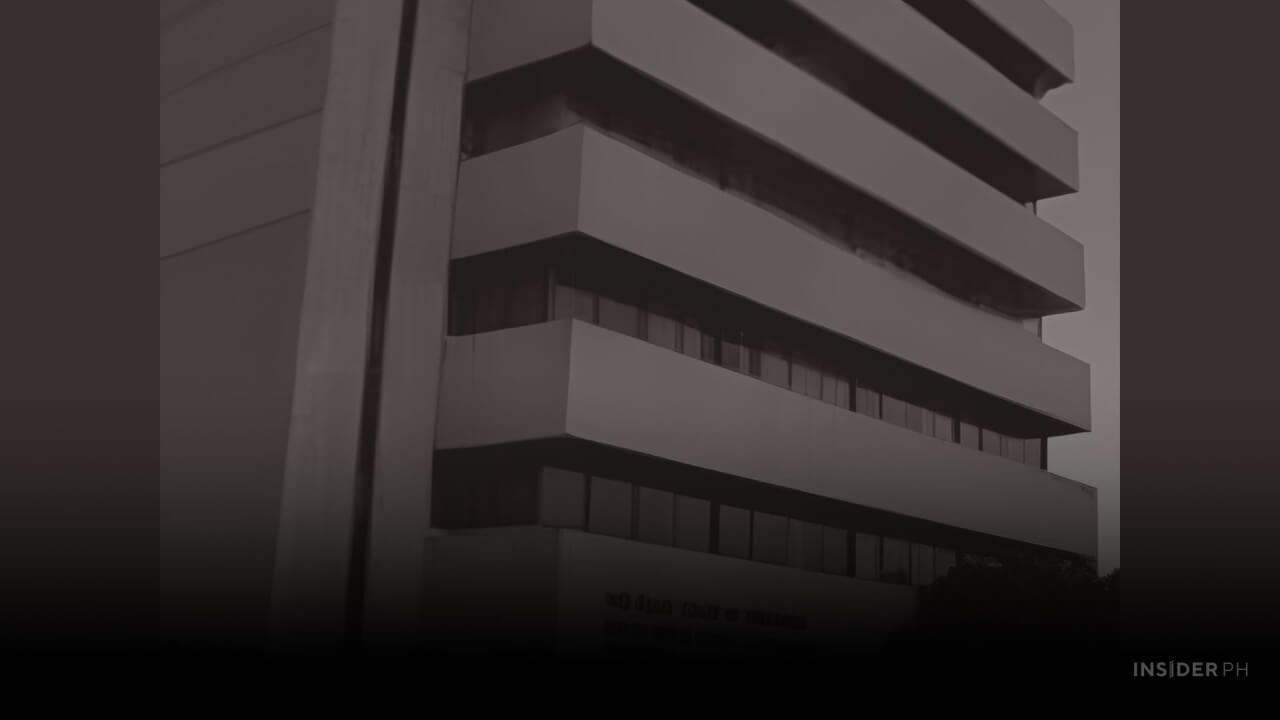

Also held to commemorate Moreno’s birth centennial, the exhibition showcased his enduring contributions to Philippine fashion and culture. On display were costumes from the Bayanihan Dance Company, exquisitely embroidered ternos, elegant evening dresses, and wedding gowns once worn by Manila’s elite and fashionable set.
An astute investor
But beyond the realm of fashion and apart from being a celebrated designer who traveled across Asia and Europe in the 1960s to showcase his collections, Moreno, who earned a B.A. in Fine Arts and a B.S. in Social Work from the University of the Philippines in 1951, was also known by those in the know as an astute investor who parked his earnings in choice real estate.
“He invested in prime real estate in Makati,” remarked a veteran public relations practitioner, who also mentioned properties in exclusive gated communities.
The J. Moreno Building
While the full extent of Moreno’s real estate holdings (including his home and atelier on Malvar street in Malate) remains hush-hush for obvious reasons, at least one trophy property became publicly known. This is the eponymously named J. Moreno Building (formerly the North Davao Mining Corp Building) in Legaspi Village in the Makati CBD, a mid-rise office structure with a residential penthouse that once stood proudly but now in a state of disrepair.
In 1976, according to the book “Antonio A. Turalba: Passion and Integrity,” Pitoy approached architect-developers Tony and Tina Turalba, longtime family friends, with a proposal: a joint-venture project involving a lot he owned on 104 Gamboa Street facing the park.
“The Turalbas would put up the building,” the book states. “They would divide the shares. When this transpired, in 1978, Pitoy held on to his while the Turalbas sold theirs.”
From that point on, Moreno would own the seventh floor and penthouse together with the lot on which the brutalist-style building stands. The second through sixth floors, meanwhile, came under the ownership of the Private Management Office or PMO (formerly Asset Privatization Trust) following the sequestration of North Davao Mining Corp.
Sometime in 1993, Moreno, who held a right of first refusal, expressed interest in acquiring the floors owned by the PMO, the latter quoting a selling price of ₱21 million, to consolidate his ownership.
A long-drawn court case
Alas, this marked the beginning of a long-drawn court battle that would span more than a decade, as Moreno fought to gain full control of the building.
The case began in 1994, when the Regional Trial Court initially ruled in favor of Moreno. It reached the Court of Appeals in 1996 and continued until 2003, when the Supreme Court finally rendered its decision in 2006 in favor of the PMO.
While today it remains unclear what ultimately became of Moreno’s ownership interest in the building, what cannot be denied is the structure's present sorry condition, its facade drab and dreary, with Fu Yuan, a popular restaurant that serves Hunan and Sichuan dishes, occupying the ground floor. As for the rest of the floors, it appears that the PMO, surprisingly, still holds office there; but for how long is anyone’s guess.
Indeed, the story surrounding the erstwhile J. Moreno Building—the sordid dispute that led to its decay and decline—is just one of many such tales of business deals gone sour. It serves as a cautionary note even for the most savvy—and prominent, as in the case of Pitoy—of real estate investors.

Features Reporter
